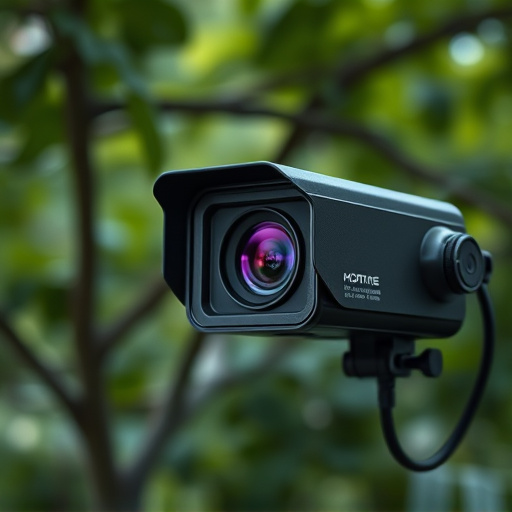Thoroughly inspect hidden areas and modify angles to find concealed surveillance cameras. Use thermal imaging and RF detectors for comprehensive sweeps. Understand legal frameworks regarding privacy and camera placement. Strategically assess environments, employ technology, and update tactics to neutralize hidden cameras.
In today’s digital age, concealed surveillance cameras pose a significant threat to privacy. This comprehensive guide provides professional methods for countering surveillance sweeps, focusing on identifying common hidden camera spots, utilizing advanced detection and disruption tools, understanding legal frameworks, and implementing effective strategies. By mastering these techniques, individuals can protect their personal and professional spaces from invasive monitoring, ensuring a safer digital environment. Discover expert insights on navigating the intricate landscape of concealed surveillance cameras.
- Identifying Common Concealed Camera Spots
- Advanced Tools for Detection and Disruption
- Legal Frameworks: Privacy Rights & Responsibilities
- Effective Strategies for a Comprehensive Sweep
Identifying Common Concealed Camera Spots
When conducting a counter surveillance sweep, one of the critical steps is identifying hidden cameras that might be monitoring your activities. Common concealed surveillance camera locations include areas with limited visibility and high angles. Think behind furniture, under ledges, inside false ceiling panels, and above door frames—these spots are favorite hiding places for covert cameras. Also, pay attention to common household objects like plants, pictures, and clocks that could double as cover for hidden lenses.
It’s essential to be vigilant with electronics too. Look for unusual devices or modifications on walls, doors, windows, and light fixtures. Remote controls, small boxes, and power adaptors might not seem out of place, but they could house covert cameras or audio recorders. Using specialized equipment like infrared thermal imaging cameras can also help detect heat signatures left by active cameras, ensuring you don’t miss any hidden surveillance equipment during your sweep.
Advanced Tools for Detection and Disruption
In today’s digital era, advanced tools have emerged to counter surveillance sweeps, offering professionals a sophisticated arsenal for detection and disruption. One of the most critical aspects is identifying concealed surveillance camera locations. This involves utilizing specialized equipment such as thermal imaging cameras, which can pinpoint heat signatures indicative of hidden cameras or other tracking devices. Additionally, portable RF (radio frequency) detectors are employed to intercept wireless signals emitted by hidden cameras, providing a non-intrusive way to locate and disable these devices.
These cutting-edge tools enable counter surveillance professionals to conduct thorough sweeps, ensuring that no hidden cameras remain undetected. By combining thermal imaging and RF detection, experts can thoroughly assess an area’s security posture and take proactive measures against potential surveillance threats. This comprehensive approach is crucial in safeguarding sensitive locations from covert observation and data exfiltration.
Legal Frameworks: Privacy Rights & Responsibilities
In the realm of counter surveillance, understanding legal frameworks is paramount. Every jurisdiction establishes its own set of rules and regulations regarding privacy rights and responsibilities, particularly when it comes to concealed surveillance camera locations. These laws dictate what is permissible and prohibited in terms of monitoring individuals’ activities, striking a delicate balance between security needs and personal freedoms.
Professionals conducting counter surveillance sweeps must be well-versed in these legal frameworks to ensure compliance. This involves recognizing legitimate expectations of privacy, understanding the requirements for obtaining search warrants, and adhering to restrictions on the placement and use of surveillance equipment, including concealed cameras. Such adherence not only safeguards individuals’ rights but also strengthens the integrity of the entire counter surveillance process.
Effective Strategies for a Comprehensive Sweep
A successful counter surveillance sweep requires strategic methods to identify and neutralize concealed surveillance camera locations. Start by conducting a thorough environment assessment, meticulously inspecting every corner and crevice for potential hidden cameras. Look beyond obvious places like ceilings and walls; consider appliances, picture frames, and even floral arrangements as possible housing sites. Utilizing specialized equipment such as infrared cameras and detector dogs can aid in uncovering advanced or hard-to-detect surveillance devices.
Additionally, employ physical obstructions and countermeasures during the sweep. Temporarily block view lines with strategically placed objects like plants or large displays. Install reflective surfaces to disrupt line-of-sight angles and make it harder for cameras to capture clear images. Regularly update and adapt these strategies, as technology and tactics used in concealed surveillance are constantly evolving.
In today’s digital age, understanding concealed surveillance camera locations and employing effective counter-surveillance methods are essential skills. This guide has equipped readers with practical knowledge on identifying common hidden cameras, utilizing advanced detection tools, navigating legal frameworks, and implementing comprehensive sweep strategies. By staying informed and proactive, professionals can protect privacy rights while mitigating the risks associated with hidden surveillance devices. Remember, staying one step ahead is crucial in an era where privacy is a precious commodity.
